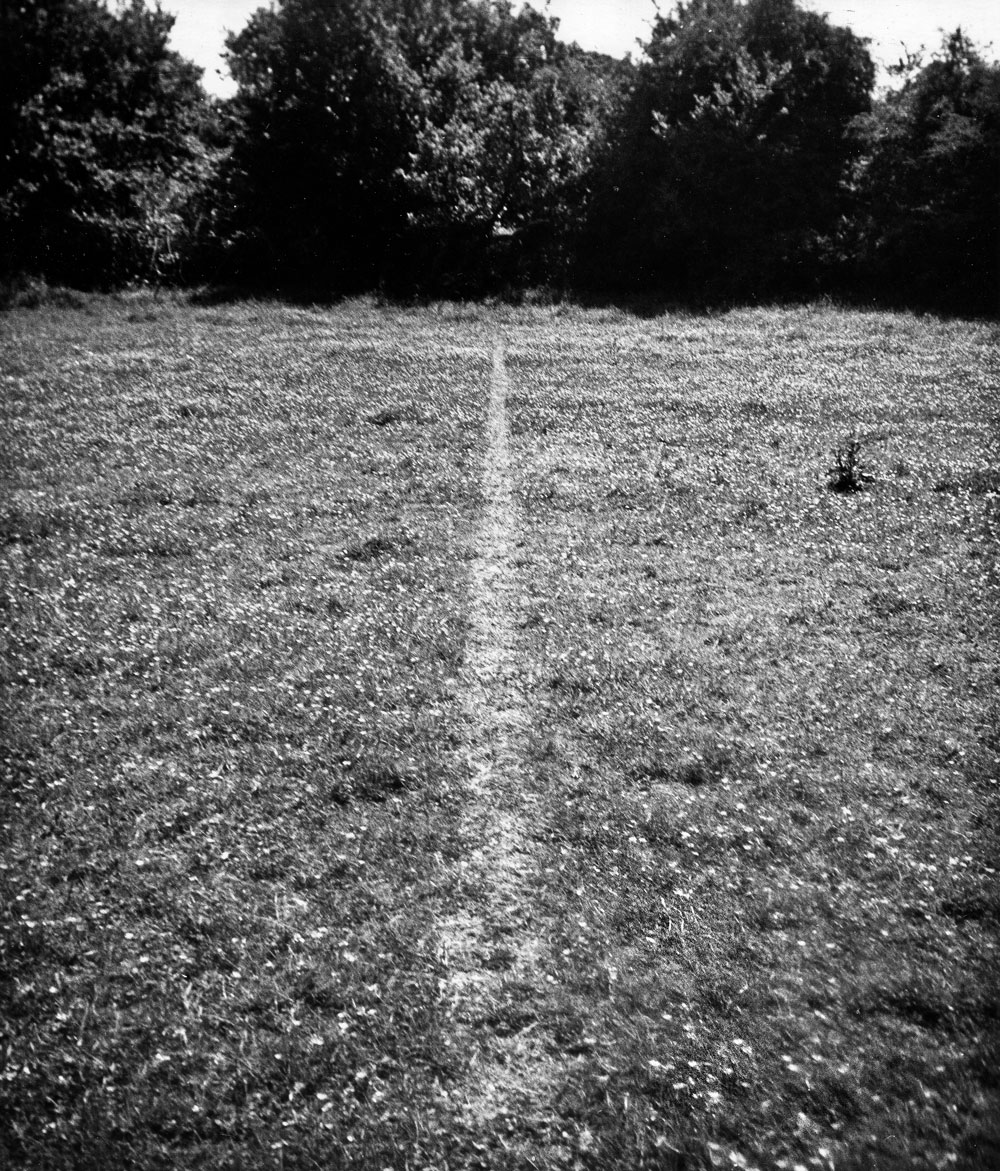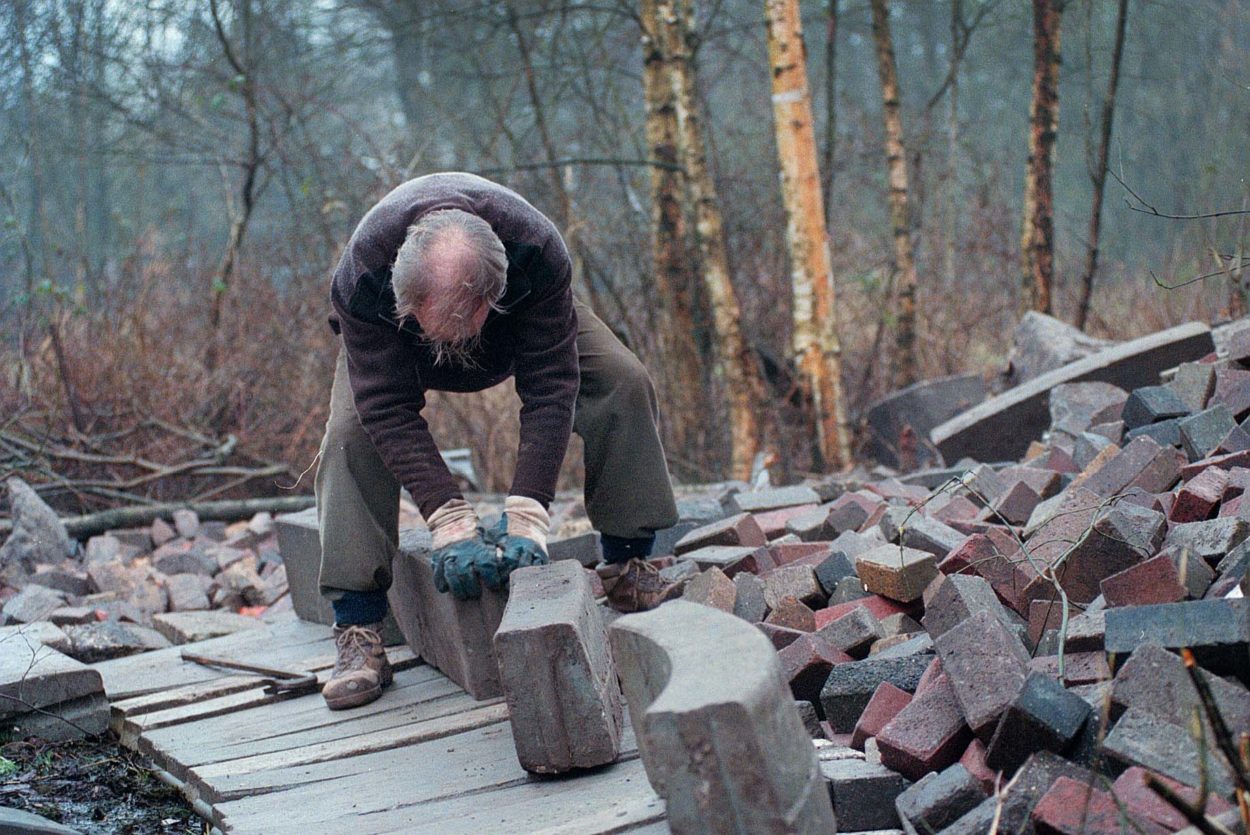Published
Toward a Common Practice—Chapter 2: Deceleration (or) Observations on the feeling of the beautiful and the sublime
This chapter explores walking as a method of deceleration; it traces the historical significance of walking for aesthetic pleasure; discusses examples of deceleration in art practice and contemporary culture; it interprets the ‘slow’ nature of walking; and finally, explains the use of digression and association as a strategy within the research.
I can only meditate when walking, when I stop I cease to think. My mind only works with my legs.
John Jacques Rousseau (1)
The intentional act of walking for aesthetic pleasure has a specific history within Western culture, beginning with ‘the wilful wanderer’ in the eighteenth century. Literary individuals sought to align themselves with the Sophists and Peripatetic school of Ancient Greece, and philosophical reflections on the intellectual benefits of walking were emerging from Burke, Kant and Rousseau (2). From the outset this particular type of walking was rooted in privilege. It is not the history of ‘the tramps, the hobos, the vagrants, the dispossessed, the fugitives, the harmed and the jobless’ (3). Being freely chosen, it was mostly undertaken by a healthy, white, educated male of a certain social and financial standing that permitted reasonable free time, access and safety.
The transformation of the private garden from ‘the formal and highly structured, to the informal and naturalistic’ simultaneously fostered the democratisation of walking practices (4). The medieval garden was situated within a walled fortress in which occupants reclined, in conversation or listening to music. The Renaissance and Baroque gardens complemented safer, more palatial residences that encouraged sitting and walking, however, the order and geometry imposed on the landscape promoted formality rather than autonomous experience. In the eighteenth century, walls were substituted for the ha-ha, an inconspicuous ditch marking the perimeter of the property and enabling views of the countryside beyond. Winding paths were introduced and sculpture was curtailed – ‘the subject of gardens was becoming nature itself’ known as the Jardin Anglais (5). Notably, the burgeoning interest in nature that empowered unprecedented physical and mental freedoms coincided with the onset of the industrial revolution. And while it began as an aristocratic preoccupation, its inherent accessibility made it popular amongst the working class too.
Whereas the French formal garden was based on a single axial view from the house, The English garden was a series of multiple oblique views that were meant to be experienced while one walked through it.
Rebecca Solnit (6)

A 1910 plan of Stowe in Buckinghamshire, an exemplar of the shift in garden design in the Eighteenth Century (7).
Walking offered the working class a means of reprieve from the industrial city and alienating labour, while walking clubs provided systems of political organisation. By the mid-nineteenth century half of Britain’s population lived in cities and towns ‘densely built, without adequate fresh water, sewers or garbage collection systems, and a constant pall of soot in the air’ (8). Middle-class bodies became sedentary and the division of labour made workers tasks monotonous. As walking gained popularity, landowners sought to prohibit traditional rights of way. But the taste for nature and landscape had become ‘a kind of Trojan horse’ through the formation of walking clubs united in solidarity to protect worker’s rights and the commons (9). Access to nature, and walking in it, was a matter of psychological survival because it permitted workers physical and mental liberties unavailable in their daily routines.
The work is essentially known as a straightforward black and white photograph of a line of flattened, trampled-upon grass made by repetitively walking up and down an unidentified field in the countryside just outside London, which we may presume regained its natural upright position soon after Long had left, with only a photograph as lasting evidence of his ‘action’.
Dieter Roelstraete (10)

A Line Made by Walking developed a set of parameters that Long would continue to explore throughout his career (11).
Walking as a means of cultural critique and deceleration has its own history within creative practice. This research enquiry began with Richard Long’s A Line Made by Walking. Seeking to dematerialise sculpture, his counter language also became an indirect critique of acceleration (12). Before him the mid-nineteenth century flâneur was a response to ‘the brutal experience of living in the emerging metropolis’ (13), a concern furthered by Guy Debord’s 1956 Theory of the Dérive (14). While walking has become a form of resistance, both flânerie and the dérive were techniques of temporary adaptation. The accumulative strength of Long’s work draws closer connections with Louis le Roy’s Eko Kathedraal and Ian Hamilton Finlay’s Little Sparta (15). These three artists integrate values and beliefs into extended practice, utilising the temporality of nature to inform the quality of their work.

From 1983 to 2000, Louise le Roy worked with the city of Heerenveen to build his Eko Kathedraal. Using surplus bricks and pavement, he erected complex structures around which nature grew. His research explored what one individual could achieve simply by making use of human energy, building materials, and nature (16).
Thinking about modes of deceleration we can consider the Slow Movement. What began as a protest against the first Italian McDonald’s in Rome’s Piazza di Spagna in the mid 80s has evolved into a global subculture. ‘Slow’ applies the philosophy of quality over quantity to everyday life, but the movement’s increasing relevance has seen it commodified. Bookstores devote entire sections to ‘Mindfulness’, the Danish ‘Hygge’ has entered mainstream culture and the hashtag #liveauthentic returns 22,117,128 posts (and counting) on Instagram. The rhetoric around ‘slowing down’ and ‘work-life balance’ are consistent with neoliberal ideology, depoliticising workers and placing onus on the individual to negotiate a system that puts economic growth before people’s well-being. Deceleration needs to extend beyond lifestyle choices and exist as political and economic priorities to be truly effective. So, how might walking inform this dialogue?
Walking stimulates thought and engages the senses, fostering a decelerated experience of the world. Robert Macfarlane’s books use personal account to propose the mind as ‘a landscape of a kind, and walking a means of crossing it’ (17). He draws a link between Nan Shepherd’s Cairngorm walks in The Living Mountain, and Maurice Merleau-Ponty’s philosophical treatise The Phenomenology of Perception for identifying the senses as ‘the intellect’s auxiliary’ (18). Solnit writes, ‘It is how the body measures itself against the earth’ (19). Walking encourages an active mode of being in and making the world, it nurtures independence, self-awareness, curiosity and criticality.
Touch is a reciprocal action, a gesture of exchange with the world. To make an impression is also to receive one, and the soles of our feet, shaped by the surfaces they press upon, are landscapes themselves with their own worn channels and roving lines. The whole foot is a document of motion, inscribed by repeated action.
Robert MacFarlane (20)
It is unsurprising then that the emergence of walking coincided with the birth of the novel. Appearing in the Romantic period, this literary form is characterised as taking interest in the details of personal life – ‘private thoughts, emotions, memories, and relations to place’ (21). The connection between writing and walking culminate in the ‘stream of consciousness’ style developed by James Joyce and Virginia Woolf. Ulysses and Mrs Dalloway unfold through the meanderings of their protagonists using digression and association to make room for the intuitive, inconsequential and informal. Within this research, these strategies have been identified as a means to initiate dialogue around the way we negotiate individual reflection, labour and common space.
The three hundred year lineage of walking gives evidence of its significance within western culture. But ‘walking as a cultural activity, as a pleasure, as travel, as a way of getting around, is fading, and with that goes an ancient and profound relationship between body, world and imagination’ (22). The research outlined here proposes that walking can be used, literally but also figuratively through the strategies of digression and association, as a method of deceleration and cultural critique. The next chapter explores how this might manifest in design practice.
•
Continue to the third chapter
Notes
The chapter title Observations on the feeling of the beautiful and the sublime refers to a collection of essays published in 1764 by Immanuel Kant that explore the nature of human experience.
References
- Macfarlane, R. (2013) The Old Ways: A Journey on Foot. London: Penguin.
- Solnit, R. (2014) Wanderlust: A History of Walking. London: Granta Books.
- Macfarlane, R. (2013) The Old Ways: A Journey on Foot. London: Penguin.
- Solnit, R. (2014) Wanderlust: A History of Walking. London: Granta Books.
- Ibid
- Wikipedia (2019). Available at: www.en.wikipedia.org/wiki/Stowe_House#/media/File:Stowe_park_map_ugglan.jpg. (Accessed 24 April 2019).
- Solnit, R. (2014) Wanderlust: A History of Walking. London: Granta Books.
- Ibid
- Ibid
- Roelstrate, D. (2010) Richard Long: A Line Made by Walking. London: Afterall Books. One Work Series.
- Long, R. (1967) A Line Made by Walking. Available at: www.richardlong.org/sculptures/2011sculptures/linewalking.html (Accessed: 29 April 2017).
- Roelstrate, D. (2010) Richard Long: A Line Made by Walking. London: Afterall Books. One Work Series.
- Ferguson, R., Fisher, J. and Medina, C. (2007) Francis Alÿs. London: Phaidon.
- Debord, G. (1956) Theory of the Dérive. Available at: www.tbook.constantvzw.org/wp-content/derivedebord.pdf (Downloaded: 14 November 2017).
- Hamilton Finlay, I. (1966-) Little Sparta [Sculpture].
- Le Roy, L. (1983-2000) Eko Kathedraal. Available at: www.hetnieuweinstituut.nl/brussels-wild (Accessed: 24 April 2019).
- Macfarlane, R. (2013) The Old Ways: A Journey on Foot. London: Penguin.
- Macfarlane, R. (2016) Landmarks. London: Penguin Books.
- Solnit, R. (2014) Wanderlust: A History of Walking. London: Granta Books.
- Macfarlane, R. (2016) Landmarks. London: Penguin Books.
- Solnit, R. (2014) Wanderlust: A History of Walking. London: Granta Books.
- Ibid